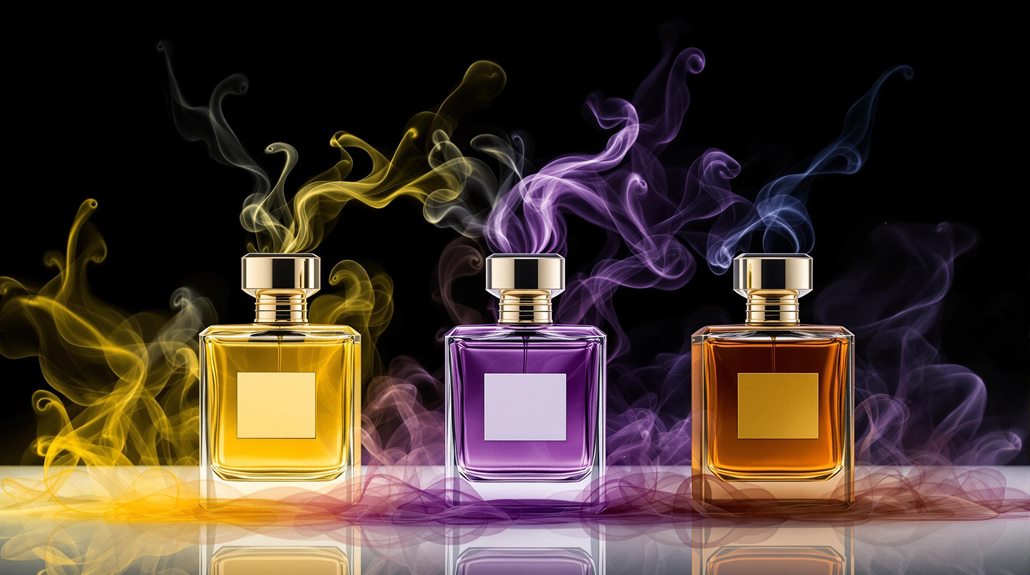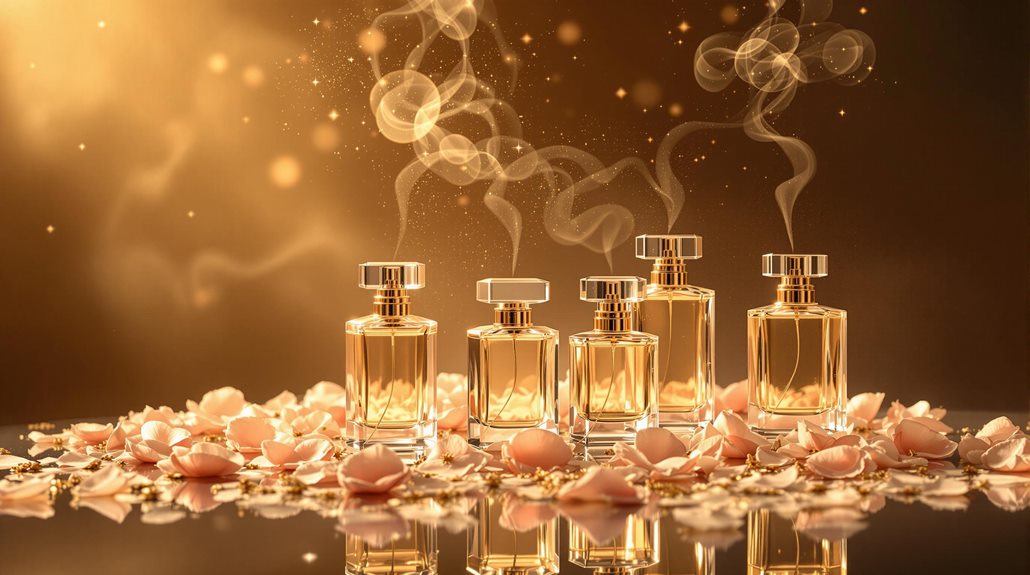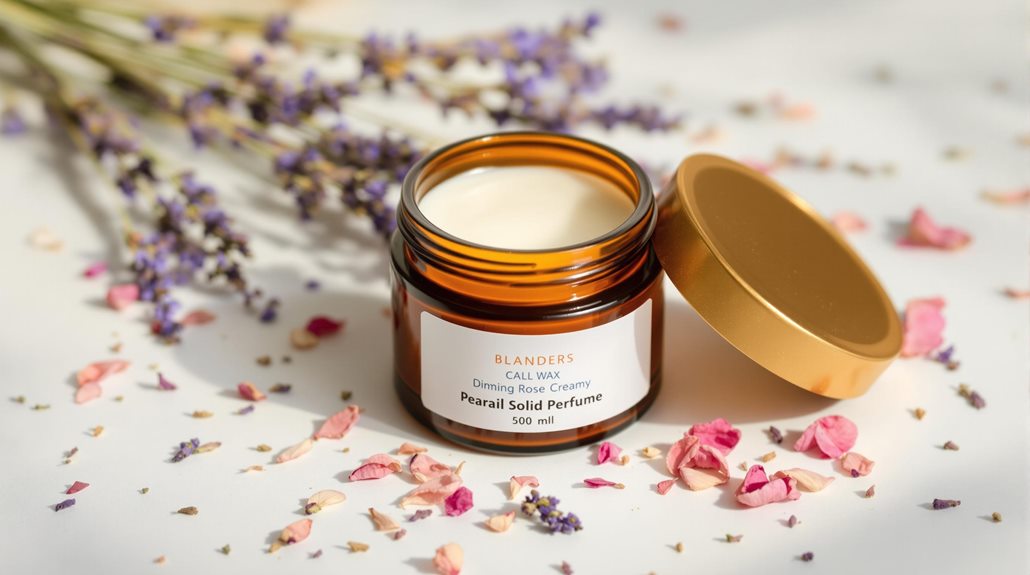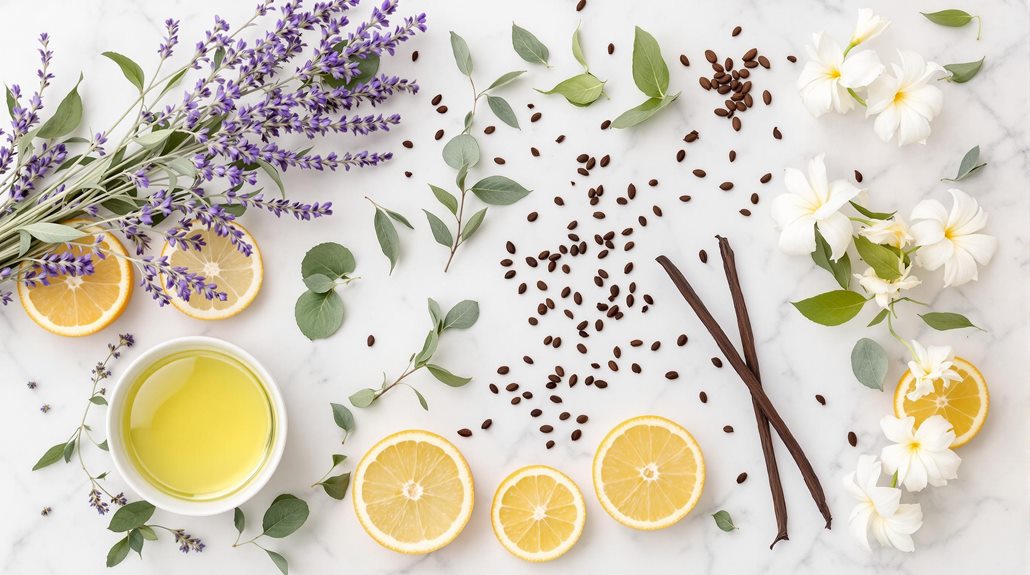Cologne vs. Perfume: Key Differences and Which One Suits You Best
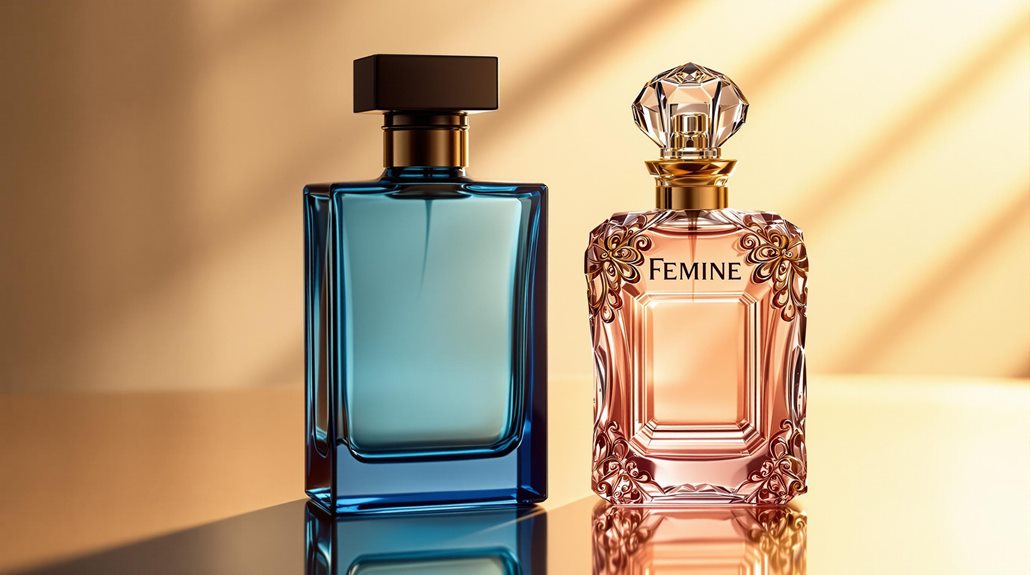
The main difference between cologne and perfume lies in their fragrance concentration. You'll find perfumes contain 20-30% fragrance oils, while colognes (eau de toilette) only have 2-4%. This affects both longevity and price - perfumes last longer but cost more, while colognes offer a lighter, more affordable option. Choose cologne for daytime activities and professional settings where you want a subtle scent, and perfume for special occasions or evening events when you need a longer-lasting fragrance. Your skin chemistry and personal preferences should guide your choice, and understanding these factors will help you make the perfect selection.
Understanding Fragrance Concentrations
Breaking down fragrance concentrations helps you understand the key difference between cologne and perfume. When you're exploring fragrances, you'll notice that perfumes contain the highest concentration of fragrance oils, typically ranging from 20-30%. This high concentration gives perfumes, also known as eau de parfum, their characteristic intensity and exceptional scent longevity.
In contrast, colognes, often labeled as eau de toilette, have a much lower concentration of fragrance oils, usually between 2-4%. This lower concentration results in a lighter, more invigorating scent that's less intense than perfume. Between these two extremes, you'll find various fragrance concentrations, including eau fraiche, which has the lowest concentration and highest alcohol content.
The concentration level directly impacts how long the scent will last on your skin and how strong it'll smell throughout the day. If you're looking for a bold, long-lasting fragrance intensity, you'll want to opt for perfume. However, if you prefer a subtle, invigorating scent that's perfect for daily wear, cologne might be your better choice.
The History Behind Both
Throughout history, both perfume and cologne have followed fascinating yet distinct paths to become the fragrances we're aware of today. The word perfume originates from the Latin phrase "per fumus," meaning "through smoke," with roots stretching back over 5,000 years. Meanwhile, Eau de Cologne emerged in the 18th century when Italian barber Giovanni Paolo Feminis created his signature scent in the German city of Cologne.
The modern perfume industry truly took shape in 19th century France, and you'll find several key developments that shaped today's fragrance arena:
- The creation of synthetic fragrance compounds in the 20th century revolutionized scent production
- The introduction of unisex eau de colognes challenged traditional gender norms
- Lavender fragrances became specifically marketed to men in the late 19th century
- The distinction between cologne for men and perfume for women became culturally ingrained
While gender norms in perfumery have evolved dramatically over time, you'll still notice the lingering association of cologne with masculine scents and perfume with feminine ones. This historical division continues to influence modern fragrance marketing and consumer preferences, though boundaries are increasingly blurred.
Comparing Scent Longevity
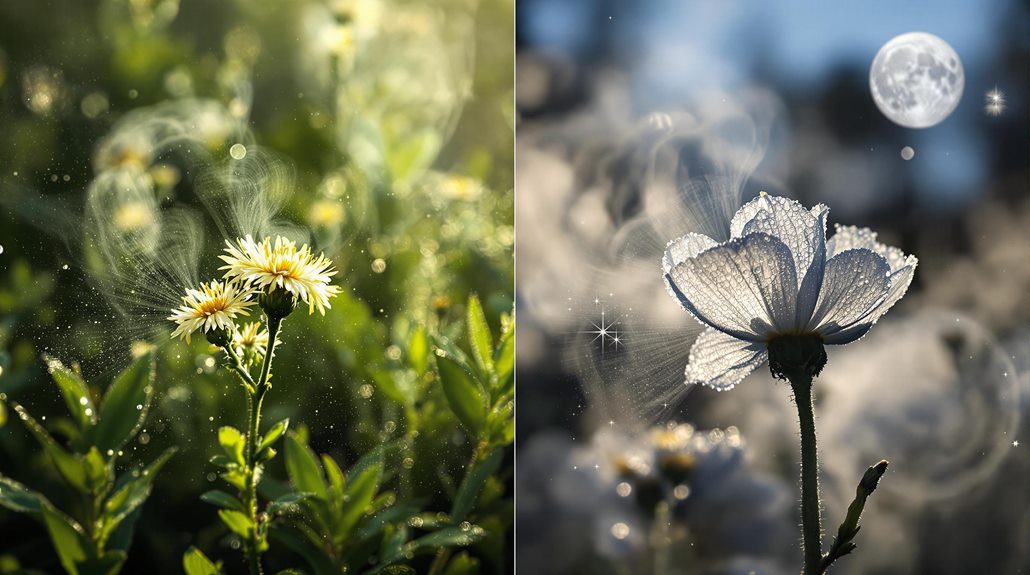
Time plays an essential role in distinguishing cologne from perfume, with each offering distinct wear patterns that affect your fragrance experience. When you're choosing between eau de parfum and eau de toilette, understanding their scent duration can help you make the right choice for your needs.
Perfumes, with their higher fragrance oil concentration of 20-30%, provide considerably longer longevity than colognes. While eau fraiche and cologne typically last up to 2 hours due to their lower concentration of 2-4%, parfum can persist throughout your day and even cling to your clothing. This difference in alcohol content and fragrance oil composition directly impacts how long you'll enjoy the scent.
Your skin chemistry plays an indispensable role in how these fragrances perform. You'll notice that the same scent might last differently on you compared to others, making it essential to test fragrances before committing. If you're looking for all-day wear, perfumes are your best investment despite their higher price point. For shorter occasions or daytime activities, cologne's briefer scent duration might be more appropriate. Understanding these longevity differences will help you choose the right fragrance for any occasion.
Price Points and Value
Money matters when choosing between cologne and perfume, with considerable price differences that reflect their composition and quality. While you'll find colognes typically priced around $75 for a 50ml bottle, perfumes can command prices exceeding $300 for the same volume. This substantial price gap stems from the higher concentration of fragrance oils in perfumes compared to the higher alcohol content in colognes.
When considering your investment in a scent, keep these key pricing factors in mind:
- Higher concentration of fragrance oils in perfumes results in longer-lasting scents, justifying their premium pricing
- Colognes offer a more affordable option due to their lower oil concentration and higher alcohol content
- Brand reputation substantially influences the pricing of both types of fragrances
- The duration and intensity of the scent directly correlates with the price point
Understanding these price differences helps you make an informed decision based on your budget and fragrance needs. If you're seeking a long-lasting scent and don't mind the investment, perfume might be your best choice. However, if you're looking for a more affordable option and don't require extended wear time, cologne offers excellent value.
Best Usage Occasions
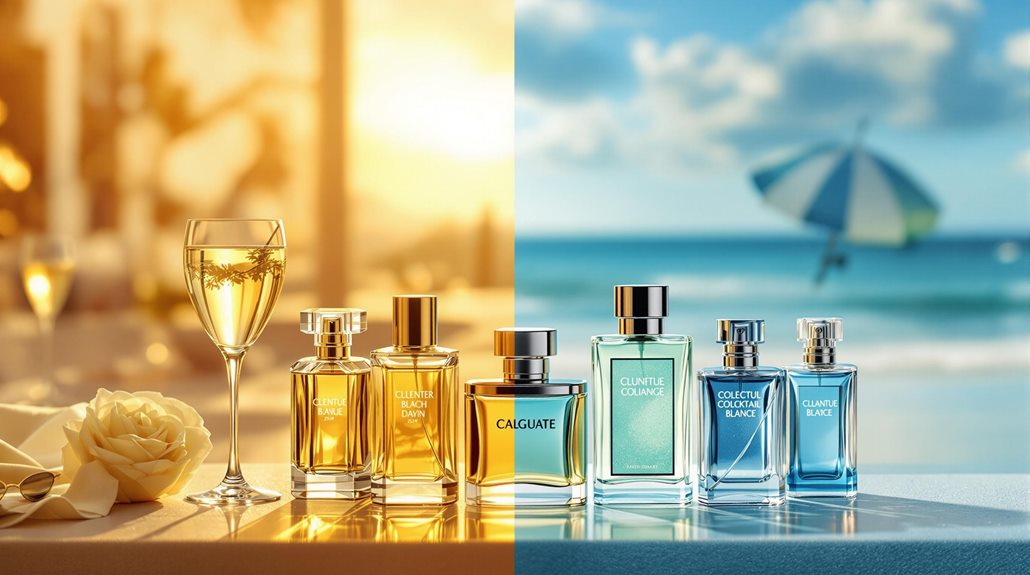
Setting selection plays a crucial role in choosing between cologne and perfume, with each type of fragrance suited for specific occasions and environments. Due to their fragrance concentration and lighter fragrance notes, colognes like eau de toilette are ideal for your daytime activities, from morning to evening commitments, providing a refreshing aroma that won't overwhelm others in professional settings.
Perfumes, particularly eau de parfum, are your go-to choice for evening wear and special occasions. Their higher fragrance concentration means they'll last longer, often several hours on the skin, making them perfect for formal events, dinner parties, or romantic evenings. However, you don't need to strictly follow these guidelines - your personal preference should ultimately guide your choice.
When selecting between cologne and perfume, consider the environment where you'll wear the fragrance. If you're heading to the office or running errands, opt for a cologne's subtle, airy notes. For occasions where you want to make a lasting impression or need your scent to wear through extended evening activities, choose a perfume's more potent fragrance profile.
Application Methods and Tips
Now that you've chosen the right fragrance for your occasion, proper application technique will maximize its impact. The key to successful cologne application lies in precision and restraint. Start with a small amount, as you can always add more, but removing excess fragrance is challenging.
When applying cologne, hold the bottle 6-8 inches from your skin to guarantee an even application. Focus on your pulse points, which naturally emit heat and help diffuse the scent throughout the day:
- Behind your ears, where blood vessels are close to the surface
- Along your neck, particularly at the base
- On your wrists, targeting the inner area
- At the center of your chest (optional, depending on clothing)
Once you've sprayed the cologne, resist the urge to rub it into your skin, as this can break down the fragrance molecules and alter the scent. Instead, let it dry naturally on your skin. This application method preserves the cologne's intended fragrance profile and allows the scent to develop properly throughout its wear time.
Skin Chemistry Considerations
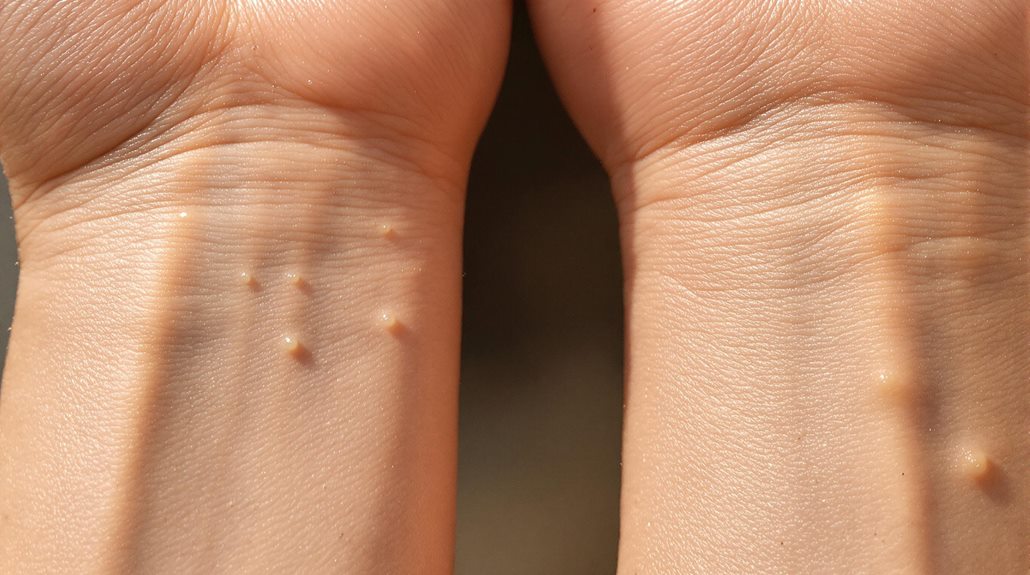
Understanding your skin chemistry is essential when selecting and wearing fragrances. Your individual skin chemistry plays a pivotal role in how a scent develops and performs throughout the day. Factors like pH levels, skin oils, and body temperature directly influence how fragrancessinteract with your skin, affecting both their intensity and longevity.
When you're choosing between cologne and perfume, you'll need to ponder your skin type and how it responds to different oil concentrations. What smells extraordinary on your friend might not work the same way on you due to variations in skin chemistry. If you have sensitive skin, you'll want to pay particular attention to how your skin reacts to different fragrance formulations.
To guarantee the best scent experience, you should always test fragrances directly on your skin rather than relying solely on paper testers or others' recommendations. Take note of how the fragrance interaction develops over several hours, as your unique skin chemistry will determine how the scent evolves. By understanding your personal skin characteristics, you can make more informed decisions when selecting fragrances that will complement your natural chemistry.
Seasonal Fragrance Selection
Just as your skin chemistry influences fragrance performance, the changing seasons should guide your choice between cologne and perfume. When Choosing the Right Perfume, consider that eau de parfums, which contain a high amount of fragrance oils, work differently in varying temperatures. The term faire sa toilette originated from the practice of adapting fragrance choices to different occasions and seasons.
During warmer months, you'll want to opt for lighter types of fragrances, where eau fraiche is mostly preferred due to its invigorating nature. In contrast, the higher concentration of fragrance in perfumes makes them ideal for cooler seasons. The key Difference Between Cologne and heavier fragrances becomes particularly noticeable as seasons change.
Consider these seasonal fragrance guidelines:
- Spring/Summer: Light citrus colognes and fresh floral eau de parfums
- Fall/Winter: Rich amber and woody perfumes with higher concentration
- Transitional Seasons: Moderate intensity fragrances that bridge the seasonal gap
- Indoor vs. Outdoor: Adjust fragrance strength based on your environment and activities
This strategic approach guarantees your scent complements both the weather and your seasonal activities.
Proper Storage and Care
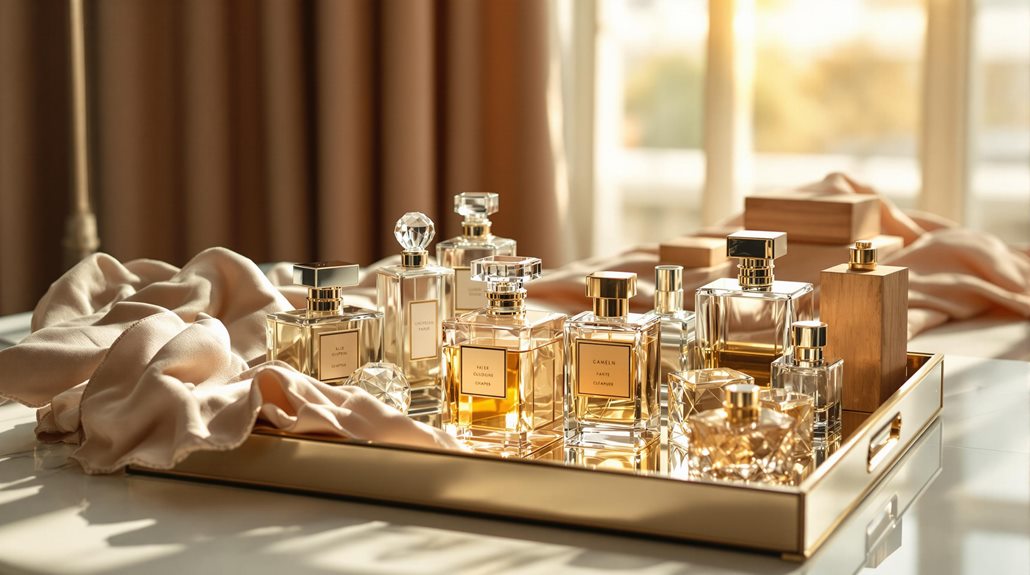
Three essential factors determine how well your fragrances maintain their quality: temperature, light exposure, and humidity levels. To protect your investment and safeguard your scents stay fresh longer, you'll need to create optimal storage conditions for both your cologne and perfume collections.
Store your fragrances in a cool, dry place away from direct sunlight, as exposure to heat and light can trigger chemical reactions that lead to scent degradation. Your bathroom might seem like a convenient spot, but high humidity levels in this space can accelerate evaporation and alter the fragrance's composition. Instead, consider storing your collection in a bedroom drawer, closet, or dedicated storage box.
Don't forget to keep your bottles tightly capped and, when possible, stored in their original packaging, which often provides additional protection against environmental factors. By following these storage guidelines, you'll greatly extend the usable lifespan of your fragrances. Remember that proper care isn't just about preserving the scent - it's about maintaining the intricate balance of notes that make each fragrance unique and ensuring you get the most value from your purchase.
Conclusion
Whether you're choosing cologne or perfume, you'll find the right fragrance comes down to personal preference, lifestyle, and intended use. Consider your budget, the occasions you'll wear it, and how long you need the scent to last. Don't forget to test fragrances on your skin, store them properly, and adjust your selection seasonally. With these factors in mind, you're ready to make an informed choice.

